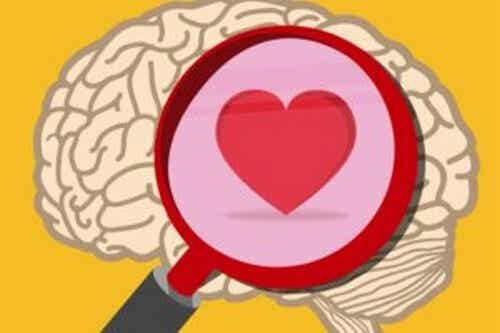Our fears are mostly learned. In some cases, the parents or the background of belonging convey a series of fears absent at birth. Is there a way to get rid of these distressing shadows?

Written and verified by the psychologist GetPersonalGrowth.
Last update: 15 November 2021
We are not born with certain fears by nature; namely that learned fears are not part of the brain register we inherit with evolution. There are fears that arise from the projections of others, especially those of the parents.
We see some anxieties reflected on the people around us and, in one way or another, they impress on us with the same intensity. All this is explained by a fact as fascinating as it is enlightening.
Like other living beings, too man is programmed to learn from the context of belonging for the purpose of survival. For example, if our father is afraid of dogs, we will soon learn that these animals are figures we should defend ourselves against.
According to psychologist John B. Watson, all fears we manifest are learned, not innate. Although some disagree with this statement, it is evident that we reach adulthood with far more fears than we are born with.
Caution: speaking of "fears" we are not referring only to the fear of spiders, heights, rats or clowns.
Much of our baggage of fears is defined by invisible entities, such as the fear of dislike, failure, abandonment or betrayal… We acquire many of these dynamics especially through social relationships.
Learned fears: what they are and how to get rid of them
Woody Allen says our fears are the most trusted friends we have: they never cheat on us for someone else, and ultimately, what would we be without them? Certainly fwe would do great things if we shook off our fears a little.
Yet there they are, ready to invade the brain with insecurities that limit our potential from an early age. Why does this happen?
Learned fears are also the result of our evolution. To adapt to the context, it is not enough to respond to this innate instinct that pushes us to stay out of the dark or flee from predators. We need to acquire new information, data that allow us to move successfully in everyday life.
The problem arises because learned fears have almost no use and are not practical, since they are the consequence of irrational processes.
A clear example of this aspect is what was previously reported: parents who transmit fear of dogs, cats, etc. to their children. This demonstrates how learned cognitive and social fears have some impact on the most ancient phylogenetic mechanisms of fear conditioning.
How and why fear conditioning occurs
To undergo the conditioning of fears and live them on our skin it is not enough for someone to tell us “this is dangerous, it can hurt you”. For example, babies still don't understand words, but they can still absorb the fears of their parents. How? Through the behaviors, behaviors and expressions of adults.
The behaviors of our attachment figures are fundamental and constitute the basis on which well-being, trust and a sense of security or, on the contrary, anxiety and fears are founded.
This is evident in contexts pervaded by armed conflicts. Younger children may develop fears of specific sounds or images simply by witnessing the reactions of their family members.
Also, let's not forget that children are experts in non-verbal language. For example, if they see their dad or mom reacting fearfully to the presence of a sparrow, then they will learn to see these birds as a danger.
Learning to fear what our predecessors feared is also part of our brain heritage
At this point, any person could say that acquired fears belong to those who are unable to rationalize these sensations.
This means that the hope would be to reach adulthood and understand that many of these parental anxieties are neither logical nor useful.
Yet, getting rid of fears is anything but easy. It is not like getting rid of a weight that we carry on our shoulders. The study conducted by Columbia University suggests an important aspect: learned fears are part of our brain heritage, a form of social learning for which we are programmed.
Areas of our brain, such as the amygdala, the medial prefrontal cortex, and the superior temporal sulcus are associated with the social cognition of fear.
So, as much as we would like to completely get rid of the shadow of those fears we have acquired over time, we cannot succeed in the short term. These shades of irrational fear are now an integral part of the neural basis.
How can we get rid of learned fears?
After all, being afraid is normal. It is a mechanism that has ensured our survival. Yet, as we all know, many of our fears are irrational and can come at a time when we let them decide for us and allow them to dominate our lives.
How, then, to manage the fears learned? Certainly it is not enough to "show courage". We are faced with a dimension to which we have offered reinforcements for a long time; in the face of this, there are only two measures left to take: rationalize and tackle.
Furthermore, we must filter these fears with logic and understand that they have been passed on to us by others and that they are of no use.
Finally, we must get close to these threatening stimuli, gradually exposing ourselves to them, but always under the supervision of specialists in the field. Only in this way will we be able to get rid of that barbed wire that delimits our existence and our human potential. Let's keep that in mind.


























